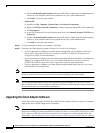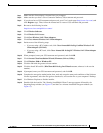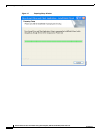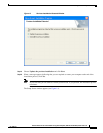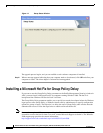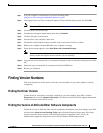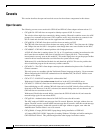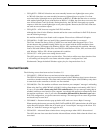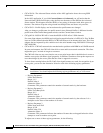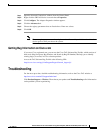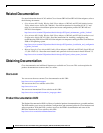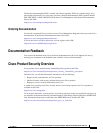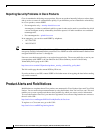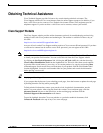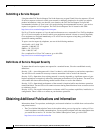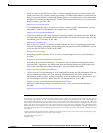
28
Release Notes for Cisco Aironet 802.11a/b/g Client Adapters (CB21AG and PI21AG) Install Wizard 3.5
OL-12267-01
Caveats
• CSCse25438—The Advanced Status window of the ADU application shows the wrong SSID
information
In the ADU application, if you click Current Status and Advanced, you will notice that the
Network Name (SSID) field displays only the first two characters of the SSID in the Advanced
Status window. This happens when the SSID is a long string of characters with white spaces in
between. The window wraps the string around into multiple lines and shows only one line.
• CSCse25451—Profile displays are inconsistent after profile names are changed
After you change a profile name, the profile name in Auto Selected Profiles is different from the
profile name in the Profile Management window and the Current Status window.
• CSCsg94210—RSSI of PI21AG is lower than RSSI of CB21AG on 5-GHz channels
For some client adapters, the RSSI (received signal strength indication) of a PI21AG is 20 to 30 dBm
lower on 5-GHz channels than the RSSI of a CB21AG because of an antenna cable issue. The client
adapters that are impacted by this condition are in the serial number range FOC1001N1JY through
FOC1049N3R8.
• CSCse49324—CB21AG retransmission mechanism has problems with RRM in an LWAPP network
In some environments, the CB21AG client fails to roam and loses network connection. The client
might take up to 5 seconds or longer to reconnect.
The CB21AG client can stay associated to one access point longer than it should before it roams to
another access point with better signal properties. In addition, sometimes client probe requests are
not acknowledged by the access point that the client is supposed to roam to.
To force faster roaming before the CB 21AG client signal becomes too weak for recognition by an
access point, you can use the Alternative Value for each of the following registry parameters.
Note The behavior that is associated with CSCse49324 is not typical of the majority of network
installations. You should adjust the following registry parameters only as a last resort.
–
Registry Parameter 1
Name: HwTxRetries
Range: 1-15
Default Value: 4
Alternative Value: 3
Comments: This parameter controls the number of transmit retries by the hardware.
–
Registry Parameter 2
Name: SwTxRetryScale
Range: 0-15
Default Value: 6
Alternative Value: 2
Comments: This parameter controls the number of transmit retries by the software. It is a
multiplier scalar factor of the number of all reties.
–
Registry Parameter 3
Name: maxConsTxFail
Range: 0-256
Default Value: 256
Alternative Value: 2
Comments: This parameter indicates the number of frames that are dropped before the client
attempts to roam to another access point.
To adjust one or more of these registry parameters, do the following:



